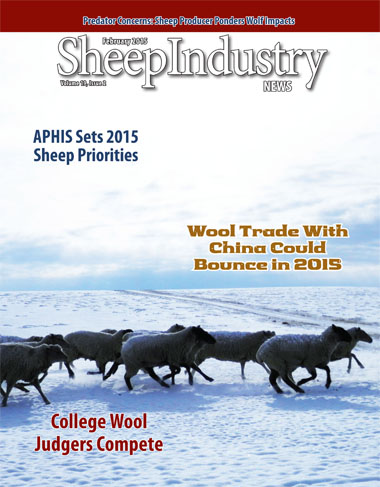Industry’s Meeting With APHIS Helps Set Priorities
Scrapie eradication, increasing export opportunities and improving overall communication are among the “goals for 2015” set by the sheep industry and the U.S. Department of Agriculture’s Animal and Plant Health Inspection Service.
In sheep and goat livestock sector meetings with APHIS, the sheep industry requested that APHIS prioritize the issues discussed and commit to working with the industry on a list of topics.
Meanwhile, one of APHIS’ past priorities remains: a call for increased samplings of sheep and goats.
“Without these submissions, scrapie-infected animals will go undetected, costing the sheep and goat industries anywhere from $10 million to $20 million annually,” the agency reiterated. APHIS noted that two sheep from the source flock identified in October 2014 died, were tested and determined to be positive for scrapie.
On the 2015 priorities, APHIS summarized them in a letter to ASI.
“Having these candid conversations with stakeholders about challenges, concerns and priorities helps APHIS better set goals, determine program direction and allocate our resources effectively,” the letter stated.
APHIS’ 2015 priority issues include:
• Continued progress toward classical scrapie eradication. This includes taking into consideration the industry’s need for the scrapie rule.
• Work to increase interagency/interdepartmental communication and cooperation and, where feasible, use its influence to help address specific industry concerns.
These concerns include bighorn/domestic sheep conflicts, the closure of the U.S. Sheep Experiment Station in Dubois, Idaho, the Minor Use Animal Drug Program and the Food Animal Residue Avoidance Database.
• Increase export opportunities for the sheep industry.
• Review all comments received on the sheep and goat 5-year business plan, update the plan as needed and publish in 2015.
• Continue to work on commitments identified in the 2013 sector meeting that are ongoing, including: the development of a recombinant Coxielle vaccine; carry out the sheep death loss survey in fiscal year 2015 in coordination with the National Agriculture Statistics Service; and finalize a report summarizing sheep and goat brucellosis and tuberculosis test data received from the states and share it with the National Conference on Interstate Milk shipments.


